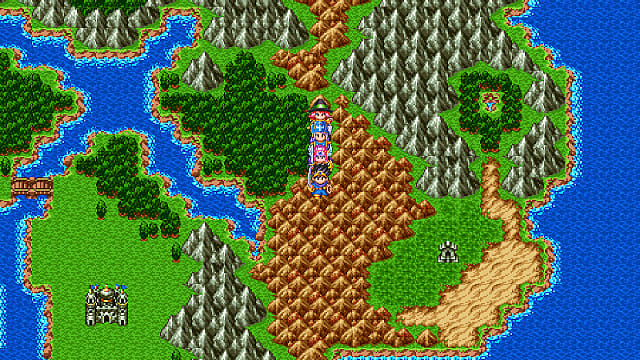

Did you know the Dragon Quest franchise has been around even longer than Final Fantasy? Dating all the way back to the NES days and originally named Dragon Warrior in North America, it's one of the first examples of what we now identify as the JRPG genre. Defined by massive, explorable worlds, slow-pacing, and turn-based combat, JRPGs are some of my favorite games of all time.
That being said, I haven't played a lot of Dragon Quest games other than Dragon Quest 4, Dragon Quest 8, and Dragon Quest 9, but I have played almost every mainline Final Fantasy game and several other lesser-known genre staples.
Since I approached Dragon Quest 3 with a completely blank slate, I can say that the Switch version holds up as an excellent port. It's a great example of why good writing, strong game design, and timeless mechanics can ensure a game is enjoyed through the decades.
Updating for the Modern Era
Dragon Quest 3: The Seeds of Salvation is actually a prequel to Dragon Quest and serves as the first game in the series' chronology. You take control of the hero that eventually goes down in legend and is later referenced in the first two games in the series.
While all Dragon Quest games are technically standalone stories that function just fine on their own, they do have a lot of intertwining bits of lore that connect them a more than the games in the Final Fantasy series, for example.
I've played a lot of well-made ports and some really bad ones. Usually, if a game is getting ported to a modern console, that means it was either extremely beloved and considered a standout in its era, or it was underappreciated but regarded as a cult classic that deserves more attention.
But then, sometimes, you get games like Dragon Quest 3, games that were lauded in some regions of the world (Japan in this case) but not as well-received elsewhere, like North America. Now that the West has started to come around on JRPGs — and Japanese games more as a whole now — it's a different market.
If you've ever played a JRPG, then you know what to expect here. You'll walk around a top-down 2D map fighting enemies in random encounters, collecting items and gear, and talking to people as you pluck your way through a 30-ish hour-long adventure. It's very traditional for obvious reasons.
Dragon Quest 3 isn't the kind of game that's going to turn you into a fan of JRPGs if you've never liked the genre. In a lot of ways, it comes off as cliche and stereotypical because, when it came out over 30 years ago, it was laying the foundation for what are now considered overdone tropes.
Visually, the art style seems much more consistent in Dragon Quest 3 than in the other two ports, Dragon Quest and Dragon Quest 2. Character art still appears higher resolution than the pixel-style backgrounds, but the style and colors are all very consistent this time. They thankfully don't stick out like a sore thumb in this one.
The excellent MIDI soundtrack plays a big role in keeping you hooked as well.
Combat and Pacing
The story follows the main hero on a journey to vanquish evil, with a few twists throughout. It is certainly far more gripping than the first two games in the series. One neat bit that I enjoyed is that you can recruit/create the rest of your party at the Inn to pad out whatever types of characters you want to bring along for your journey.
And for the first time in the series, Dragon Quest 3 has a class-based system that adds some much-needed depth and nuance. Overall, it's still a pretty simplistic combat system that's slow-paced and strategic by design, but there's at least more going on here that just attacking back and forth over and over.
Perhaps the biggest issue in the way of finding enjoyment out of Dragon Quest 3 is going to be the same today as it was 30 years ago: pacing. If you're a fan of JRPGs and don't mind reading lots of text or exploring a world to uncover details on your own, then this could be for you. But if slower pacing and the potential of needing to grind a lot at the end sounds off-putting, then this might not be worth a look.
Pros:
- Great, consistent art style
- Excellent soundtrack that stands out
- Enjoyable story that keeps you engaged
- Good enemy variety and fun designs
Cons:
- Only the main character is part of the actual plot
- Relatively simplistic combat system
- Lots of grinding near the end
In an age where games are often ported, upgraded, or remade after just a few years, it's refreshing to see a revamp of a truly old game that needed the facelift. Dragon Quest 3 first released over 30 years ago and despite the fact that it certainly shows its age with some of its stiffer designs and outdated principles, it remains a testament to an era of timeless ideas and forward-thinking creativity.
If you only want to buy one of the re-released Dragon Quest ports on Switch then Dragon Quest 3 is definitely the one to get.
[Note: Square Enix provided a copy of Dragon Quest 3: The Seeds of Salvation for the purpose of this review.]



0 comments:
Post a Comment